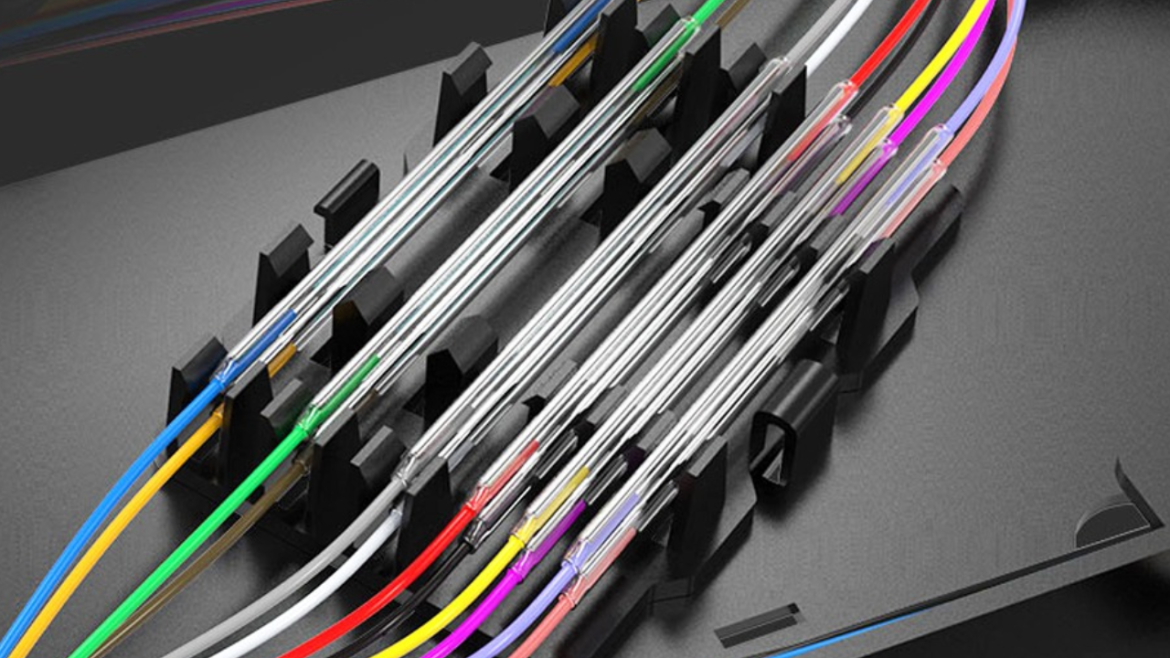Fiber heat shrink tubes are adaptable and efficient methods for shielding, sealing, and insulating components in a variety of fields and uses. These tubes, which are constructed from specialized polymer materials, have a number of advantages, including atmospheric securing, mechanical safeguards, resistance to water, and electrical insulation.
They are especially useful for protecting delicate components from hostile environments and assuring their lifespan and dependability. In order to understand how fiber heat shrink tubes | Bonelinks function and how to utilize them efficiently, we will examine their characteristics, applications basic theories, and relevant factors in this article.
The Usage of Components with Fiber Heat Shrink Tubes
In order to protect sensitive components from damage during the heat shrinking process, fiber heat shrink tubes can be utilized with sensitive components but with a few restrictions. Using fiber heat shrink tubes with delicate components is shown in detail below:
Component Selection
Find the sensitive systems first, as they may need protection or protection. Important electronics, connections, gauges, and any other item that can be damaged by heat or pressure should be included in those. It’s crucial to take into account components’ susceptibility to heat and mechanical stress.
Tube selection
Pick a heat shrink tube that works with the sensitive electronics’ characteristics and temperature range. Some heat shrink tubes are made to function at lower temperatures, reducing the possibility of causing harm to materials that are delicate. For equipment to be properly sealed, protected, and insulated, a suitable heat shrink tube must be used.
Right-Sizing
Select a heat reduction tube that may be placed over the sensitive area without placing undue stress on it. To allow for adequate shrinkage, the tube should be slightly larger than the item. The component’s diameter or size should be measured before insulation is applied. This might be a cable, connector, joint, or something else entirely.
Protective
Consider using more safeguards, such as shielding tape or aluminum foil, to shield the touchy area from direct heat exposure at some point throughout the drying process if it is primarily sensitive. For a variety of equipment and applications, fiber heat shrink tubes offer a safe option.
Warmness Gun putting
Lower the warming gun’s power setting as necessary. Many warming guns include adjustable temperature settings that let you control how much heat is being applied. This keeps the delicate component from being subjected to too much heat. To successfully and safely shrink fiber heat shrink tubes, the heat gun must be set up properly.
Slow Heating
Hold the heat gun safely away from the delicate component when using it. Start the heating process from a distance and gradually move the appliance closer while maintaining a steady and gentle motion. Choose a heat gun with a low-speed fan setting and changeable heat settings. By doing so, you can regulate the heat’s strength and stop a quick heating process.
Monitoring
Watch the heated shrink tube and the sensitive area carefully as you apply heat. Check for any indications of suffering, warping, or excessive heat. If you detect any negative effects, turn off the heat right away and reevaluate the situation. Keep an eye on its behavior, such as how it begins to contract, take on the shape of the element, and stick to the surface.
Brief Burst Heating
Remember to use brief bursts of warmth separated by gaps to allow the delicate matter to cool. This limits the risk of harm and eliminates prolonged exposure to heat. The heat shrink tube is heated in small bursts as opposed to continuously when using the brief burst heating method. Working with delicate parts or materials might make this technique very helpful.
Cooling section
The heat shrink tube must properly solidify and maintain its reduced form during the cooling period that follows heat shrinking. Once the heat cutback tube has correctly contracted and fitted to the object, turn off the heat source. Allow the assembly to finish cooling. The delicate matter is shielded from abrupt shifts in temperature in this way.
Inspection
It has cooled to be sure the delicate item is still there and undamaged. Check to make sure the heat shrink tubing is firmly in place and provides the necessary protection and security. After adding fiber heat shrink tubes, it’s crucial to do a thorough examination to make sure they’re attached correctly, offer adequate protection, and adhere to the appropriate criteria.
End Summary
Fiber heat shrink tubes offer a flexible response to the problems of component insulation and protection. These tubes, which are made of cutting-edge polymer materials, ensure the lifetime and functionality of crucial components by providing a range of advantages, including moisture resistance and electrical shielding. You may maximize the efficiency of fiber heat shrink tubes by being aware of the fundamentals of heat shrinking, making the right material choices, and using the right application methods.
